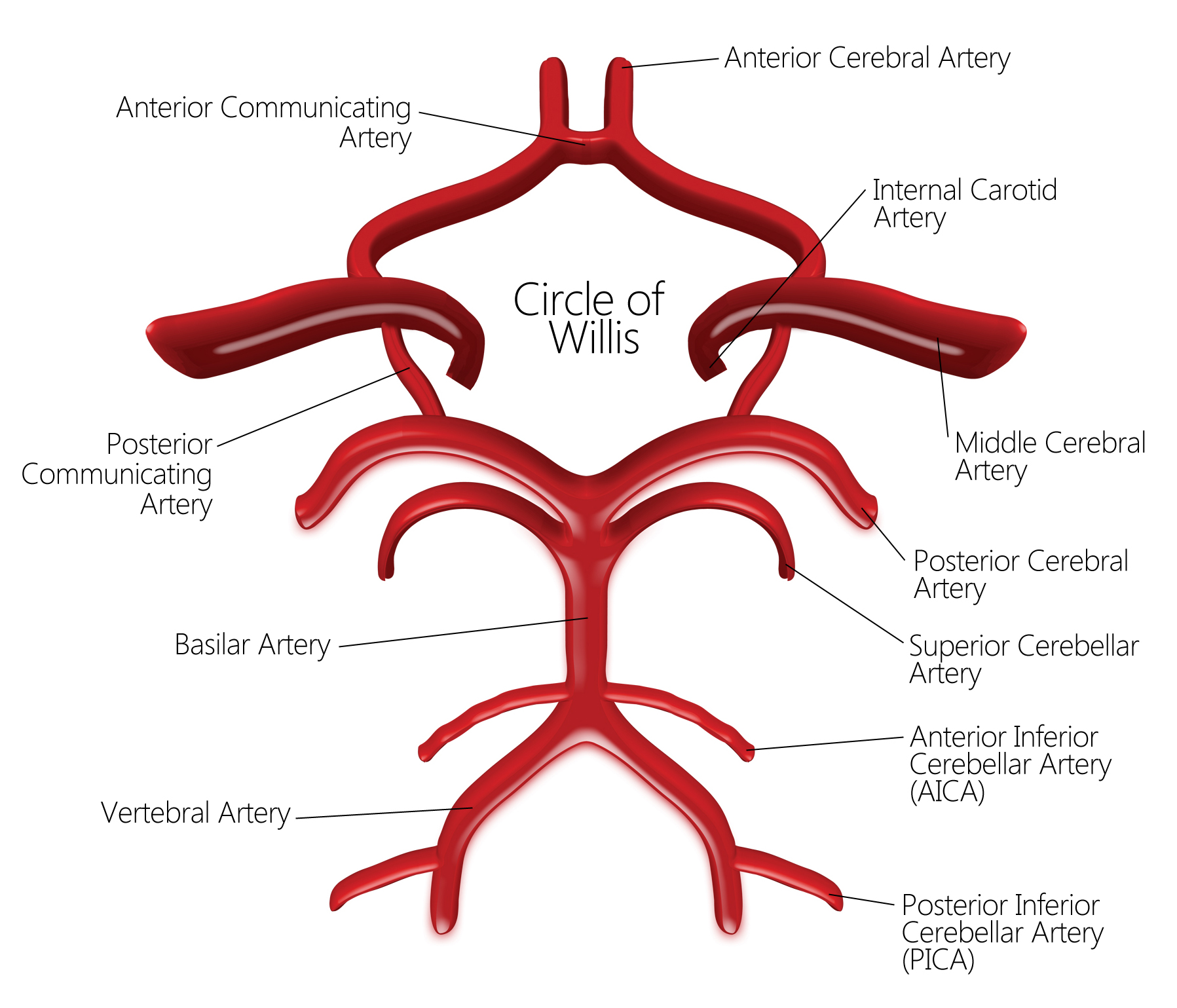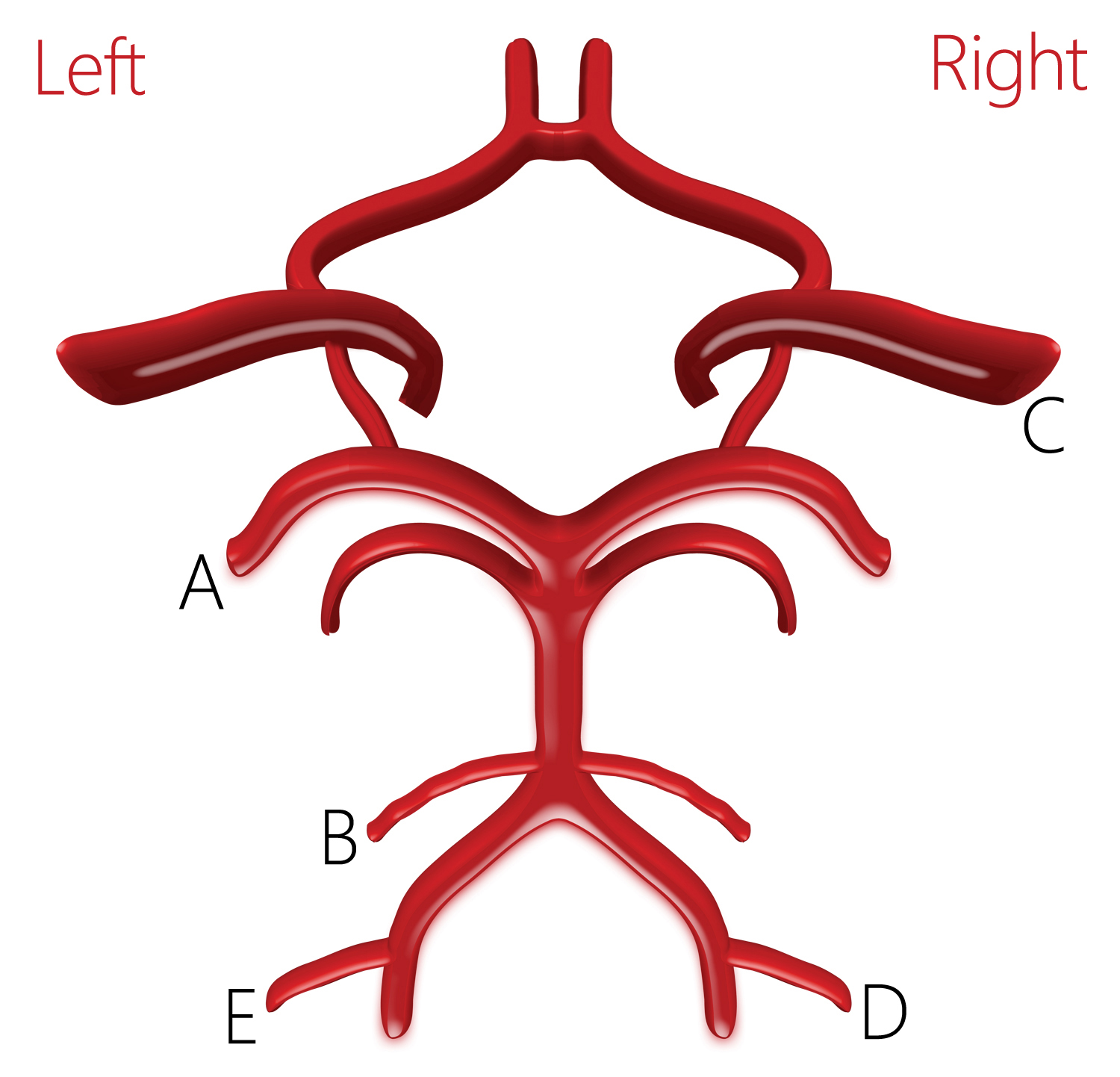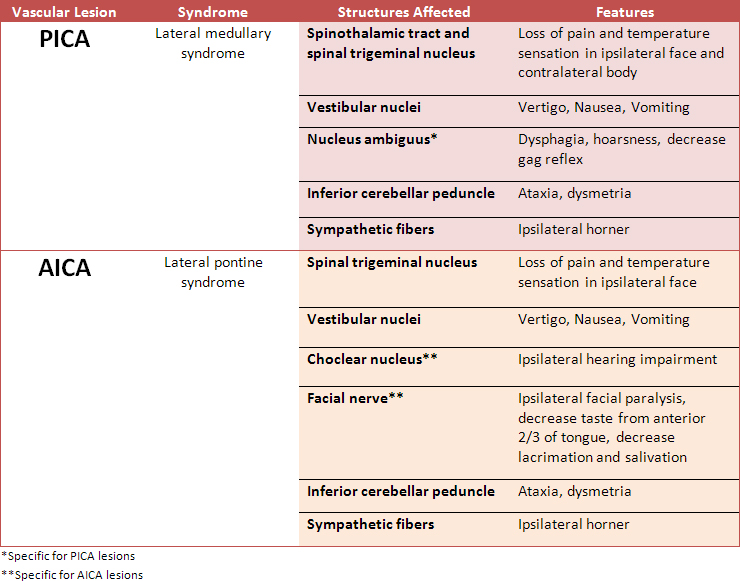WBR0582
| Author | [[PageAuthor::Serge Korjian M.D. (Reviewed by Serge Korjian)]] |
|---|---|
| Exam Type | ExamType::USMLE Step 1 |
| Main Category | MainCategory::Anatomy, MainCategory::Pathophysiology |
| Sub Category | SubCategory::Neurology |
| Prompt | [[Prompt::A 74-year-old woman with past history significant for diabetes and hypertension presents for sudden onset of facial paralysis. The patient explains that during a phone call with her daughter she felt a weird tingling sensation localized to the left face after which she was unable to close her mouth fully. She describes a sharp ringing in her left ear with near-total hearing loss. She also reports severe dizziness and two episodes of vomiting. On physical exam, you notice complete paralysis of the left face with loss of sensation. You also note loss of pain and temperature sensation over the whole right body. Which of the following arteries is most likely occluded in this patient? |
| Answer A | AnswerA::A |
| Answer A Explanation | [[AnswerAExp::This refers to the left posterior cerebral artery (PCA). Occlusion of the PCA leads to an infarct of the occipital cortex specifically the visual cortex. Classically, this presents with homonymous hemianopia with macular sparing.]] |
| Answer B | AnswerB::B |
| Answer B Explanation | [[AnswerBExp::This refers to the left anterior inferior cerebellar artery (AICA) whose occlusion can explain our patient's presentation. Typically, think of AICA lesions when facial and cochlear nuclei are involved.]] |
| Answer C | AnswerC::C |
| Answer C Explanation | [[AnswerCExp::This refers to the middle cerebral artery(MCA). Occlusion of the MCA in the dominant hemisphere leads to contralateral facial and upper extremity sensory-motor deficits. Crossed deficits are not seen in MCA strokes. MCA strokes can also lead to aphasia.]] |
| Answer D | AnswerD::D |
| Answer D Explanation | [[AnswerDExp::This refers to the right posterior inferior cerebellar artery (PICA) whose occlusion may have similar features to those in this patient. However, PICA lesions classically present with nucleus ambiguus dysfunction that manifest as dysphagia, decreased gag reflex, and hoarsness. PICA lesions do not have facial and cochlear nerve involvement.]] |
| Answer E | AnswerE::E |
| Answer E Explanation | [[AnswerEExp::This refers to the left posterior inferior cerebellar artery (PICA).]] |
| Right Answer | RightAnswer::B |
| Explanation | [[Explanation::
|
| Approved | Approved::Yes |
| Keyword | WBRKeyword::AICA, WBRKeyword::PICA, WBRKeyword::Stroke, WBRKeyword::Brainstem, WBRKeyword::Lateral pontine syndrome, WBRKeyword::Pons |
| Linked Question | Linked:: |
| Order in Linked Questions | LinkedOrder:: |

